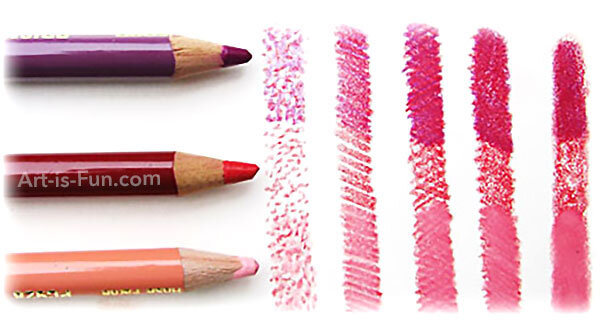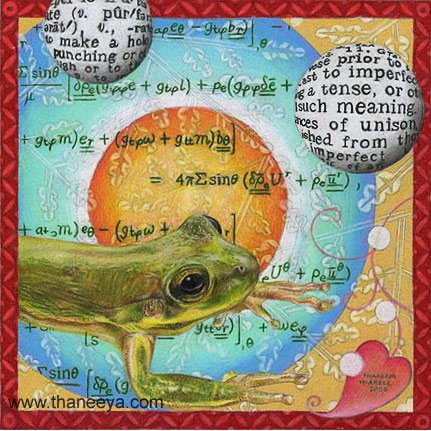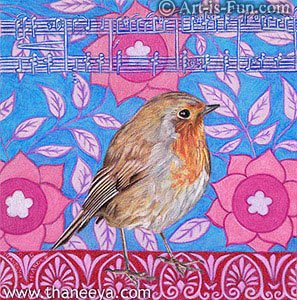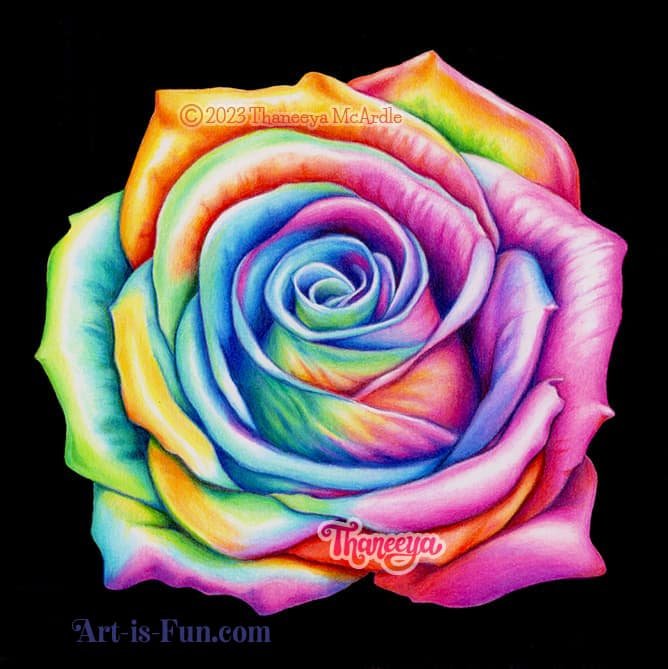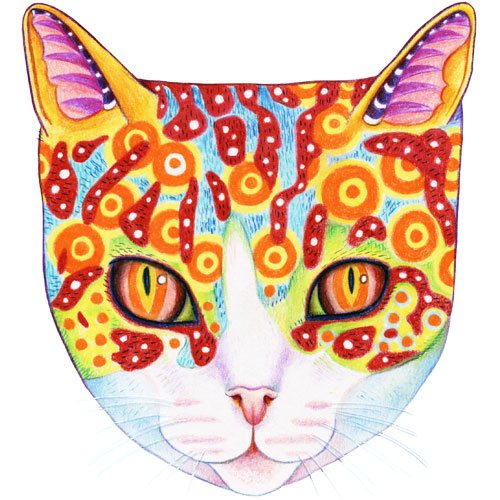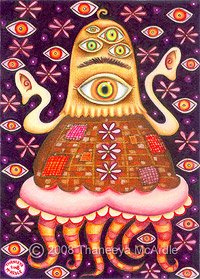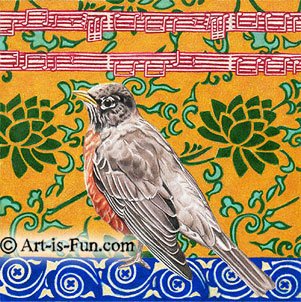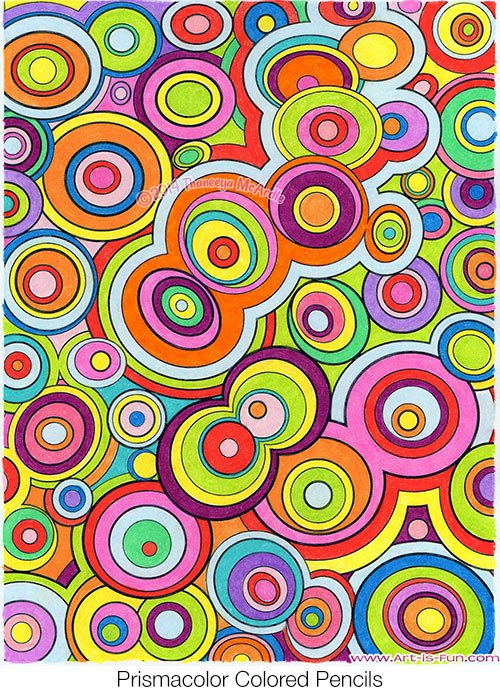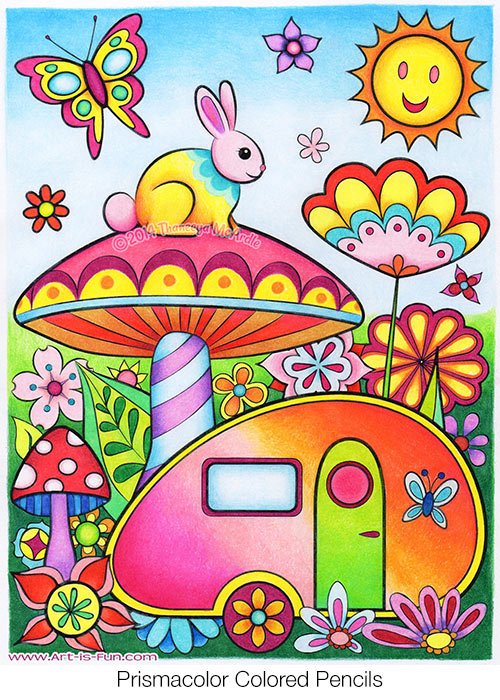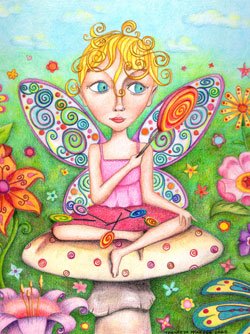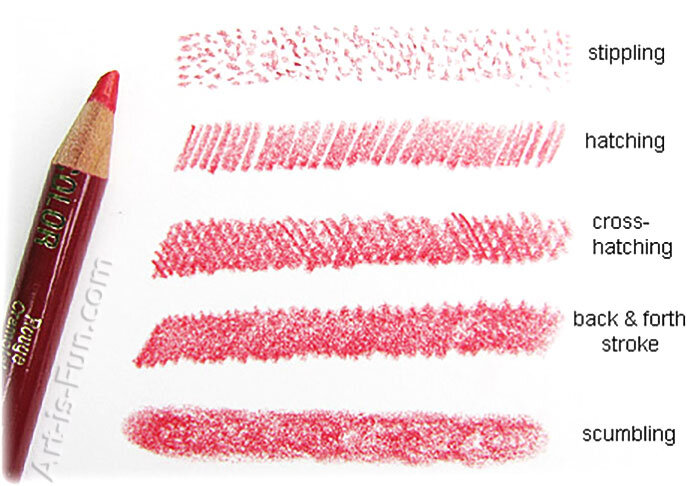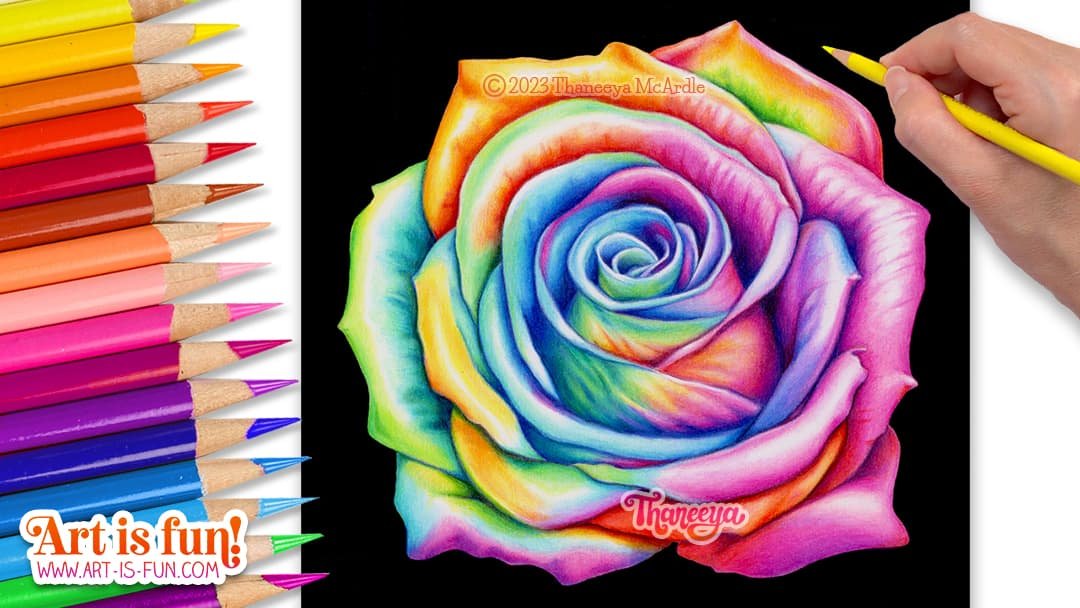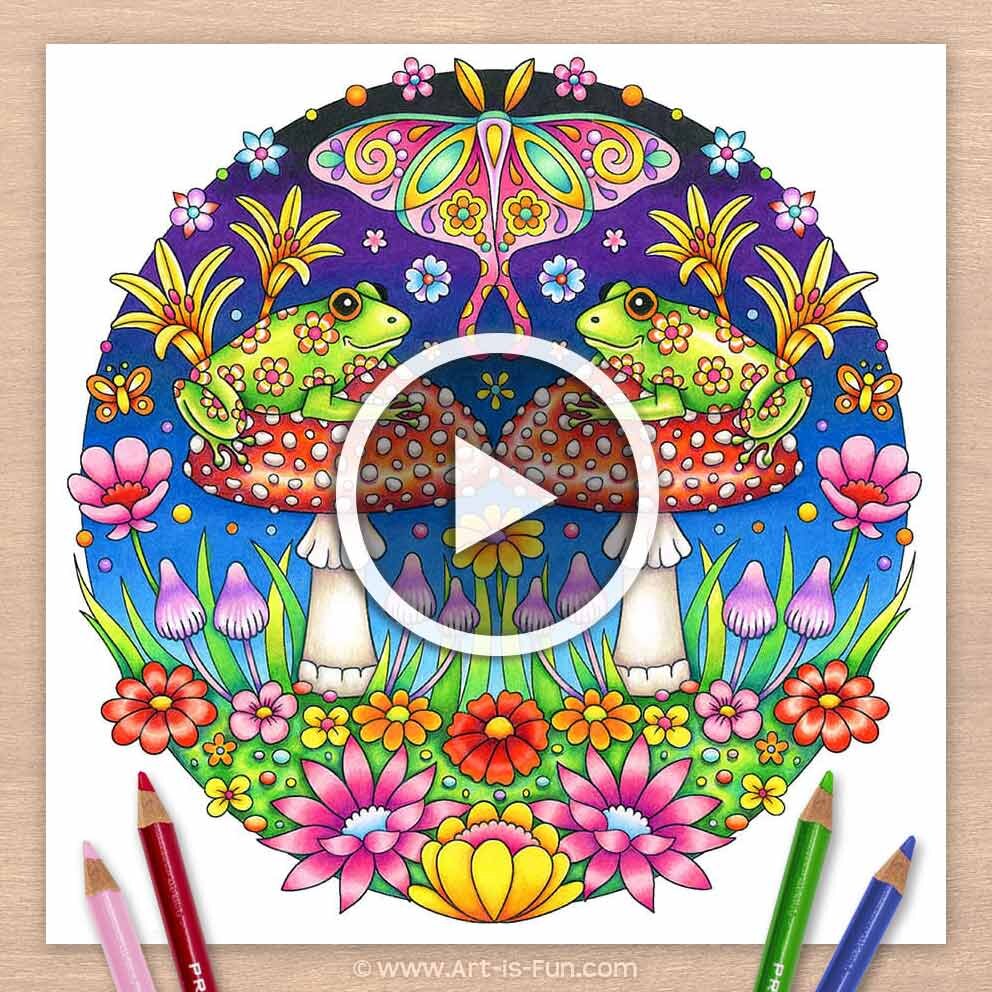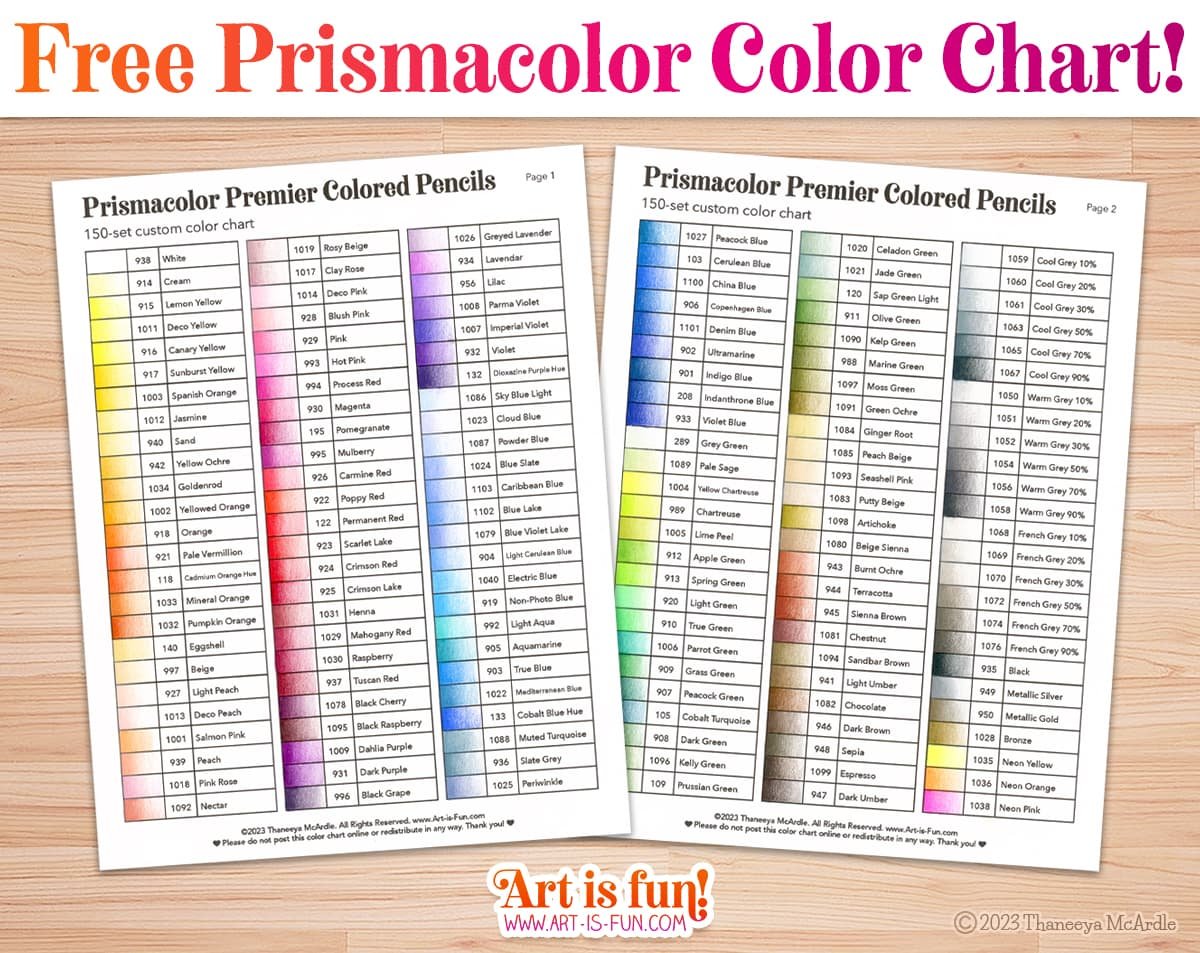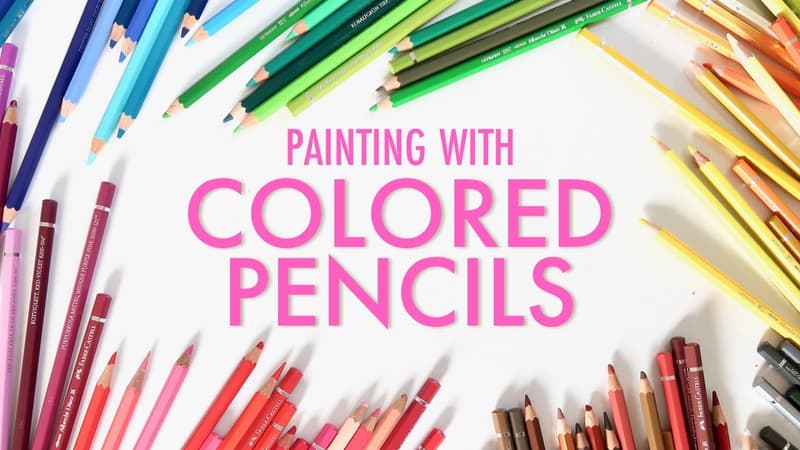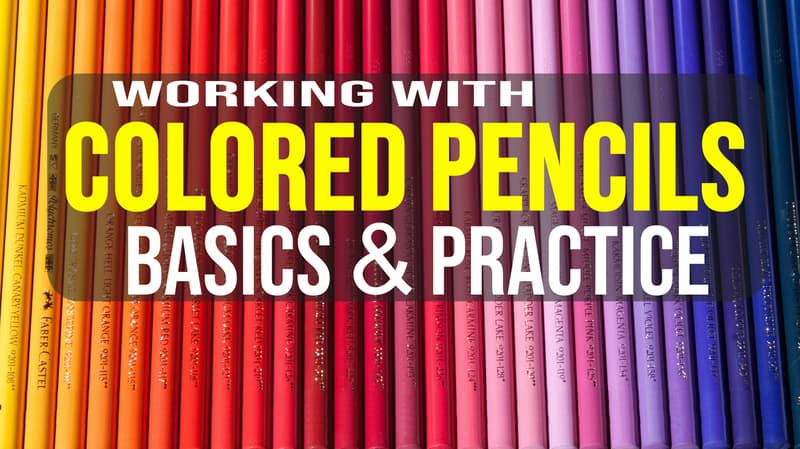Colored Pencil Instruction
This colored pencil instruction will teach you some basic colored pencil techniques that will have you creating fabulous colored pencil art in no time!
These basic colored pencil techniques form the foundation for any type of colored pencil art that you would like to create.
These colored pencil techniques cover the 5 main ways that you make marks with colored pencils: stippling, hatching, cross-hatching, back and forth stroke, and scumbling. You can see examples of these 5 techniques on the left!
Once you master these colored pencil techniques, you can use these colored pencil techniques to layer colors over top of one another to create a rich, luminous depth.
For this colored pencil instruction, I used Prismacolor Colored Pencils (affiliate link). These are my favorite brand of colored pencils because they are waxy and full of pigment. This allows them to create color that is so rich and luscious that your drawings actually resemble paintings!
Scroll through my Colored Pencil Art to see some examples:
Although I prefer Prismas, you can use any brand of colored pencil when following this colored pencil instruction. The techniques are totally the same! To learn more about the different brands available, check out my Guide to Colored Pencils.
These techniques will also work differently depending on the type of paper you're using (e.g smooth vs. textured paper). To figure out the right paper for your budget and art style, check out my guide to the Best Paper for Colored Pencils.
Colored pencil techniques
5 Basic Colored Pencil Strokes
Stippling - Stippling involves placing lots of tiny dots on your paper. The dots can be close together, far apart, or anywhere in between! Practice stippling by drawing dots that are close together and also by drawing dots that have more distance between them. Also, notice the difference between dots made when the pencil is sharp vs. when the pencil point is dull. Stippling is a great way to add some interesting texture to a drawing.
Hatching - Hatching involves drawing a series of parallel lines. These lines all go in the same direction. The lines can be close together, far apart, or any variation in between. The pencil is lifted from the paper after each line and then placed down again to create a new line.
Cross-hatching - Cross-hatching involves drawing a series of parallel lines (hatching) and then drawing another series of parallel lines going in another direction on top of the first set of lines. This is a great way to create shading in a drawing. You can create some interesting textures through cross-hatching.
Back and forth stroke - The back and forth stroke is probably the most common of all the colored pencil techniques. This is probably how you drew with crayons as a kid! Basically, you just put your pencil on the paper and draw in a continuous back and forth motion, without lifting your pencil off of the paper. This is a good way to fill different areas of your drawing with a lot of solid color.
Scumbling - Scumbling is another technique you probably used as a kid without even knowing that it had a name! Scumbling involves making continuous circular marks on your paper, without lifting your pencil. This is another good way to fill in different areas with lots of color.
These are the 5 basic colored pencil strokes that form the basis for any colored pencil work that you will do. You can use each of these techniques alone or in various combinations to create some really interesting effects!
Creating Realism with Colored Pencils
Once you’ve got the hang of the basic colored pencil strokes, the next step is to learn how to layer your colored pencils to create smooth blends and gradations of color, like the rainbow rose colored pencil drawing above!
Colored Pencil Tutorial
For a step-by-step colored pencil lesson, check out my detailed step-by-step colored pencil tutorial in which I demonstrate how I colored in the whimsical nature scene below!
Colored Pencils Guide
To learn about my recommendations for the best colored pencils on the market, check out my Guide to Colored Pencils!
Best Paper for Colored Pencils
In this guide to the Best Paper for Colored Pencils I’ll take you through important considerations – such as quality, texture, and paper weight – to help you make an informed purchase.
Free Blank Prismacolor Color Chart
Download my FREE Blank Prismacolor Color Chart for their set of 150 colored pencils!
Frequently Asked Questions
Want to dive deeper into learning about how to use colored pencils? Pick up some handy colored pencil tips and learn some new colored pencil techniques in this handy FAQ about using colored pencils.
Explore more
These colored pencil art bird drawings depict a variety of birds in colorful scenarios, with the aim to expand our usual view of the creatures we meet in nature.
Discover how to sharpen a colored pencil to a nice, fine point! Learn how to prevent your Prismacolor colored pencils from breaking.
Richard Klekociuk's beautiful colored pencil art depicts stunning Tasmanian landscapes. Come see his colored pencil drawings that often blend realism with Christian symbolism and abstract imagery!
Colored Pencil Instruction Books
The books below are available on Amazon. As an Amazon Associate I earn from qualifying purchases.
Level-up Your Colored Pencil Skills!
Make the most of your new colored pencils with these easy-to-follow video lessons from Skillshare! Get instant access with a 14-day free trial or use our code, ARTISFUN30, to get 30% off annual membership! As a Skillshare affiliate I get a small commission that helps support this site.

